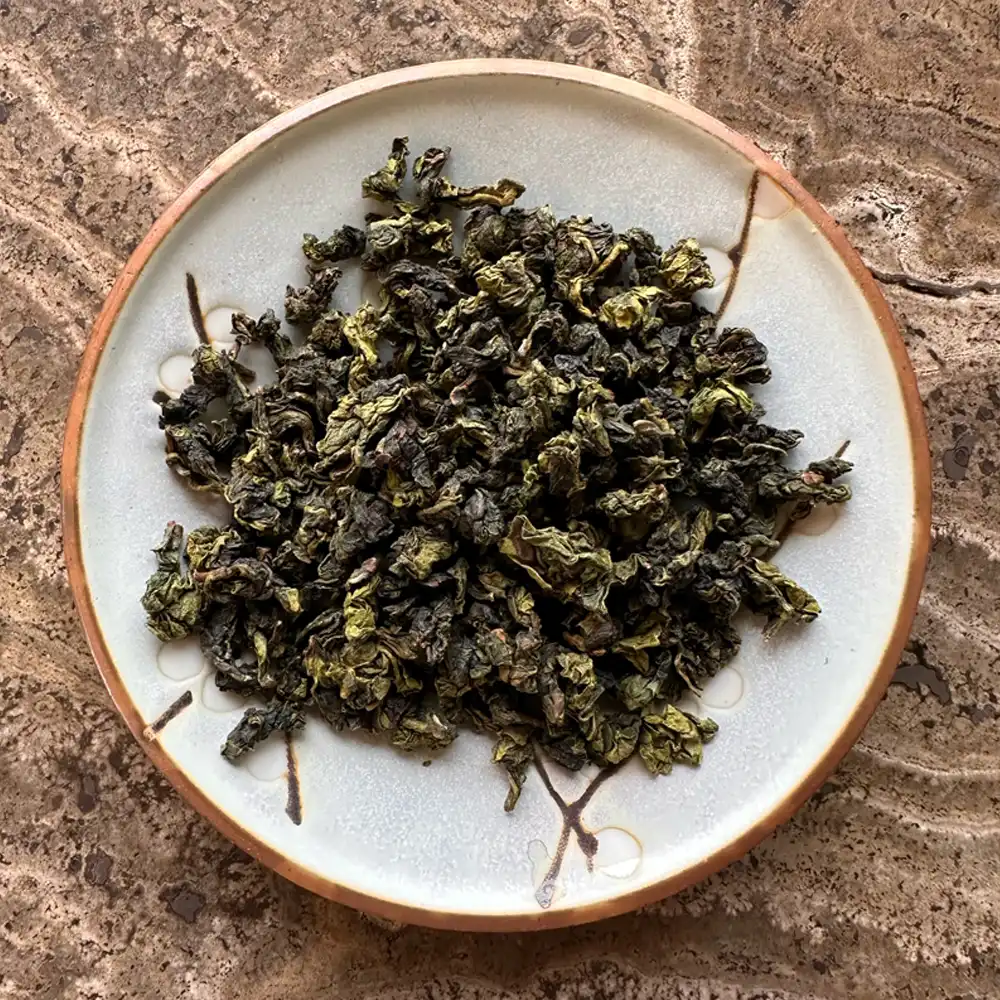tea and its surroundings, Tea Legend
Tie Guan Yin: between history and legend
Undoubtedly one of the best-known and best-loved Chinese oolongs in the world: it is Tie Guan Yin, a tea originating in Fujian that is famous for its fresh, floral notes and the peculiar shape of its leaves, which are tightly rolled onto themselves. It is a tea to which multiple legends and even multiple “styles of production” are linked , leading to different results in terms of flavors and aromas.
Have we intrigued you? Then let’s try to learn more about this oolong tea in all its facets!
Tie Guan Yin: legends from a distant land
The name of this tea already partly tells of the mysticism that surrounds it. Tie Guan Yin (also sometimes transliterated as Ti Kwan Yin) means “Iron Goddess of Mercy.”: Guan Yin, in fact, is the Chinese goddess of compassion, which somewhat overlaps with the figure of the Bodhisattva Avalokiteśvara belonging to the tradition of Indian Buddhism. A Bodhisattva is someone who through the Buddha’s teachings finds the path to enlightenment, but who decides to remain on Earth to help others-just as Guan Yin did. But how is this deity related to tea?
One of the two best-known legends tells the story of Wei, a poor peasant from Xiping village in Anxi county (Fujian), who one day, on his way to the fields, spots a small shrine dedicated to Guan Yin. The shrine, however, is dirty, poorly maintained, with the iron statue representing the goddess overgrown with weeds.Wei decides to take care of it, sweeping away the dirt and dust, clearing the statue of weeds, and decorating the small space with fresh flowers. That same night, having returned from work dead tired, Wei falls fast asleep: in his dreams he is visited by the goddess Guan Yin, who thanks him for taking the trouble to refurbish his little shrine and gives him precise instructions. Wei, once awake, is to go to the shrine of the goddess again: behind the shrine he will find a small treasure, the reward for his act of compassion. So will Wei, who the next morning discovers behind the shrine a tea sprout: he plants it in his garden and makes leaves from it, which he tries to infuse, finding that they yield a wonderful golden liquid with a sweet, floral fragrance. Thanks to the cultivation of this tea, with its unsurpassed aroma, not only Wei but the entire county of Anxi will become wealthy and affluent, benefiting in the years to follow from this extraordinary product that will truly be their fortune.


Another legend, perhaps less famous, tells instead of the adventures of the young student Wang, also from Xiping village (Anxi): one day the boy found a mysterious tea seedling under the rock where the goddess Guan Yin was said to meditate. Intrigued, he therefore tried growing it and obtained a delicious tea from it, which he brought as a gift to Emperor Qianlong as a tribute from the whole village: the emperor was enraptured by the taste and fragrance of those leaves and decided to name the tea “Tie Guan Yin” in honor of the goddess.
Beyond the legends that have arisen around the birth of this oolong, what is certain is that it made the fortune of Anxi County, which remains to this day theoriginal area of production of the best quality Tie Guan Yin.
Tie Guan Yin: production technique
The Tie Guan Yin, as we have learned from the two main legends about him, was born in the village of Xiping within Anxi county: we are in China’s Fujian province, in the far southeast of the country.
The production method is the classic one for Chinese oolongs with low oxidation (up to 20 percent), which gives the leaves a color between jade green and forest green, actually bringing it very close to a green tea.
After harvesting and wilting, the leaves are placed on large trays for the “shaking” stage , which is essential to start breaking down the outermost cells of the leaves and initiate oxidation-this is why, in wet leaves, you will be able to observe a rust-red color at the edges, while the center remains green. Another function of the shaking stage is to redistribute the still water in the stem, putting it back into circulation through the leaf veins-this will allow the aromas to develop properly and evenly.
Once the tea master deems the level of oxidation achieved to be satisfactory, the leaves are cooked to stop oxidation: this can be done by hand in a wok or be done with special machines called panning machines, which reach very high temperatures and automate the process of killing green or shaqing (literally, “killing the green”).
At this point, the leaves are rolled up to obtain their characteristic shape: they are wrapped in cotton cloth and with the help of machinery twisted tightly around themselves until they resemble small balls.
Finally,drying is carried out in special ovens to stabilize the flavors and eliminate residual moisture.


Tie Guan Yin: organoleptic characteristics
What does Tie Guan Yin taste like? To fully answer this question, we must keep in mind that there are actually 2 main styles of making this Chinese oolong, one of which is almost unknown to us Westerners:
- Hua Xiang Tie Guan Yin: is the most modern style of production, which in the 1990s decreed the enormous commercial success of this oolong tea that has become world famous. The processing chosen by the tea master ensures that the fragrance of the tea remains delicate, floral (Hua Xiang actually means “fragrance of flowers”) and very similar to that of a green tea. The liquor is golden and clear, with fresh, gentle notes that are so reminiscent of white flowers, making it the most beloved and well-known version in the West.
- Nong Xiang Tie Guan Yin: is a Tie Guan Yin that undergoes, in addition to greater oxidation of the leaves, an additional step, namely a roasting process that can be more moderate or more firm. This version is the one that actually comes closest to the traditional style of Tie Guan Yin production, with processing that in ancient times also allowed for better preservation of the product precisely because of the roasting. In this case, the leaves take on a darker coloring, in shades of brown and reddish; the aroma is bold and roasted, and the flavor has enveloping notes that are closer to cocoa and hazelnuts. While it remains sweet, it is a tea that in character moves away from the delicate floral notes of Hua Xiang that we are more accustomed to, but it is undoubtedly very interesting.
Try the Tie Guan Yin selected by Tea Soul!
- Spring Xiang Hua Tie Guan Yin: a Tie Guan Yin marked by an intense orchid fragrance and distinct sugary notes, with silky body and fresh persistence.
- Spring Gande Tie Guan Yin: a sweet-liquored Tie Guan Yin, with notes reminiscent of puffed rice and a creamy edge that make it unique in flavor.
- Tie Guan Yin Classic: Delicate tasting liquor with sweet notes of white flowers and fresh vegetable hints, light and silky body. A very elegant tea that’s perfect for every moment of the day.






